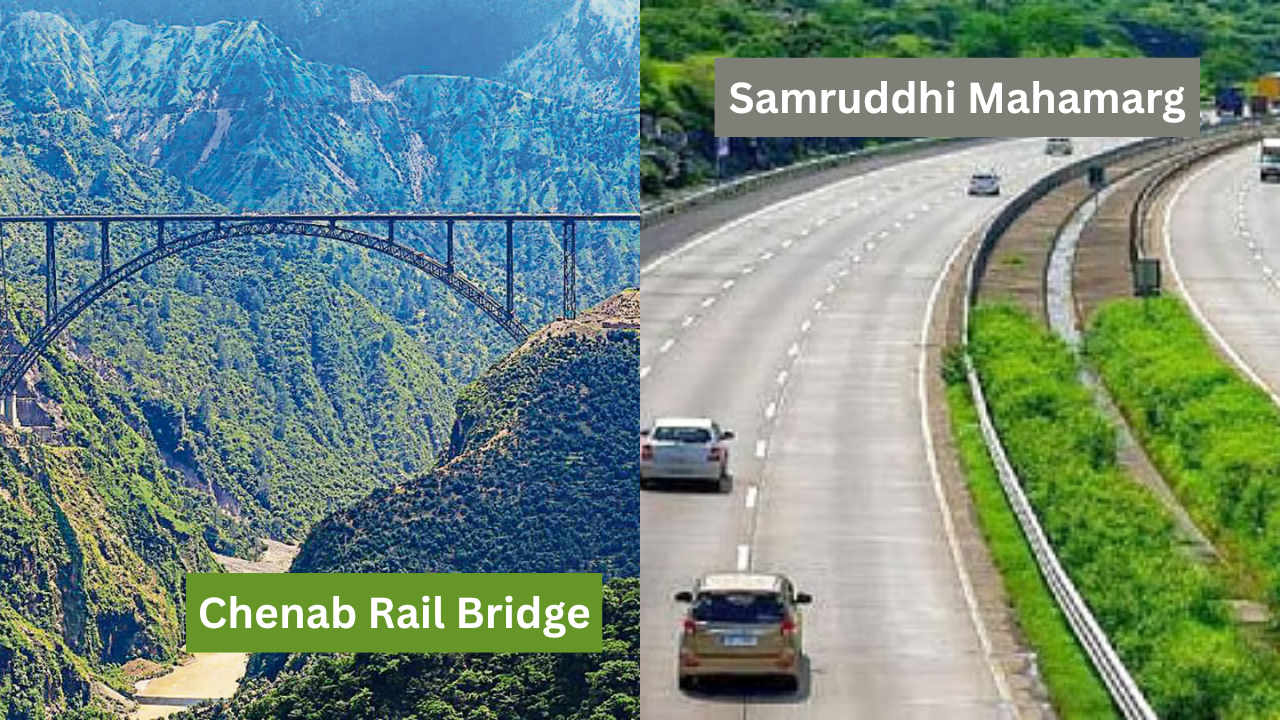India's Infrastructure Powerhouse: Mahasamruddhi Mahamarg and Chenab Bridge Pave the Way for Economic Boom

Mumbai, India – June 5, 2025 – India's ambitious stride towards becoming a global economic powerhouse is being robustly powered by monumental infrastructure projects. At the forefront of this transformation are the Hindu Hrudaysamrat Balasaheb Thackeray, Maharashtra Samruddhi Mahamarg, and the Chenab Rail Bridge, twin symbols of engineering prowess that are not just connecting regions but fundamentally reshaping the nation's economic landscape.
The Mahasamruddhi Mahamarg: A Corridor of Unprecedented Growth
The 701-km, 6-lane access-controlled super communication expressway, linking Nagpur to Mumbai, is revolutionizing logistics and trade in Maharashtra. By drastically cutting travel time from an arduous 16 hours to a mere 8, this expressway is unleashing a cascade of economic benefits:
- Reduced Transit Costs & Enhanced Efficiency: Businesses can now transport goods faster and more affordably, directly boosting profit margins and making Indian products more competitive. This improved efficiency is critical for time-sensitive goods and services.
- Boost to EXIM Trade: Offering seamless connectivity to major economic corridors and ports like the Jawaharlal Nehru Port Trust (JNPT), the Mahamarg facilitates quicker and more streamlined export-import operations, opening up new global markets for India's diverse produce and manufactured goods.
- Regional Development & Job Creation: The expressway passes through several underdeveloped regions, particularly Vidarbha and Marathwada. Its design incorporates "Krushi Samruddhi Nagars" – planned integrated townships focused on agro-based industries, cold storage, food processing, and logistics hubs. This targeted development is attracting significant industrial investment and is projected to create thousands of direct and indirect jobs, revitalizing rural economies.
The Chenab Rail Bridge: Bridging Gaps, Unlocking Kashmir's Potential
In the challenging terrain of the Himalayas, the Chenab Rail Bridge stands as a testament to human ingenuity – the world's highest railway arch bridge. As a critical component of the Udhampur-Srinagar-Baramulla Rail Link (USBRL) project, it provides a vital all-weather rail link between the Kashmir Valley and the rest of India, an achievement with profound economic implications:
- Unprecedented Connectivity: This bridge ensures year-round, reliable rail access to the Kashmir Valley, previously often isolated by harsh weather. It will dramatically reduce travel times for both passengers and freight.
- Tourism Boom: The improved accessibility is set to unleash Kashmir's immense tourism potential, drawing in domestic and international visitors. This will significantly boost local economies, creating jobs in hospitality, transport, and ancillary sectors.
- Agricultural Prosperity & Trade: Farmers in the region will gain efficient and timely access to national markets for their high-value produce (like apples, saffron, and handicrafts). This will reduce post-harvest losses, ensure better prices, and integrate Kashmir's unique agricultural output into the national supply chain.
- Socio-Economic Integration: Beyond commerce, the bridge symbolizes deeper integration, fostering socio-economic development and national unity by bringing Kashmir closer to the national mainstream.
The Ripple Effect: Broader Developments Propelled by Megaprojects
These megaprojects are not isolated achievements; they are strategic investments designed to create a powerful ripple effect across the Indian economy:
- Enhanced Productivity and Streamlined Logistics: The drastic reduction in transit times and costs directly translates to improved supply chain efficiency across all sectors. Businesses can optimize inventory, respond faster to market demands, and shift more freight to cost-effective and environmentally friendly rail transport, leading to greater overall economic productivity.
- Magnet for Domestic and Foreign Investments: World-class infrastructure signals a strong, conducive business environment. The creation of new industrial corridors and economic zones along routes like the Mahasamruddhi Mahamarg attracts significant capital, leading to the establishment of new factories, logistics parks, and commercial hubs, further spurring growth.
- Widespread Employment Generation: The impact on employment is multi-faceted. Beyond the thousands directly employed during construction, these projects create vast indirect employment in material supply chains and induce long-term job growth in sectors like logistics, manufacturing, tourism, agriculture, and related services, particularly in newly connected regions.
- Strengthening Global Competitiveness: By drastically reducing India's logistics costs and improving its overall infrastructure quality, these projects enhance the nation's "Ease of Doing Business" ranking. This not only makes Indian goods more competitive on the international stage but also positions India as a more attractive destination for global supply chains and investments, contributing significantly to its aspirations of becoming a major global economic power.
In conclusion, projects like the Mahasamruddhi Mahamarg and the Chenab Rail Bridge are the keystones of India's infrastructure-led growth model. They are laying a robust foundation for a more connected, efficient, prosperous, and globally competitive India, ensuring sustained economic ascent for decades to come.



 185
185

 The BharatBiz
The BharatBiz
 16
16

